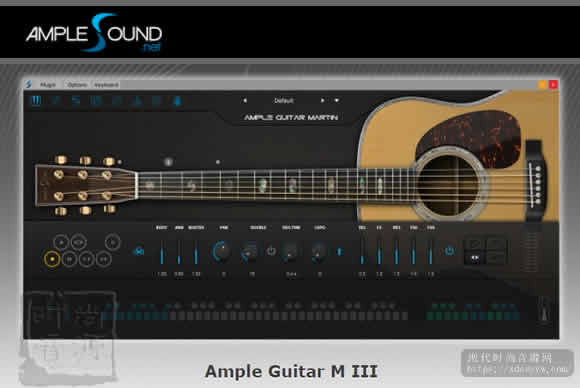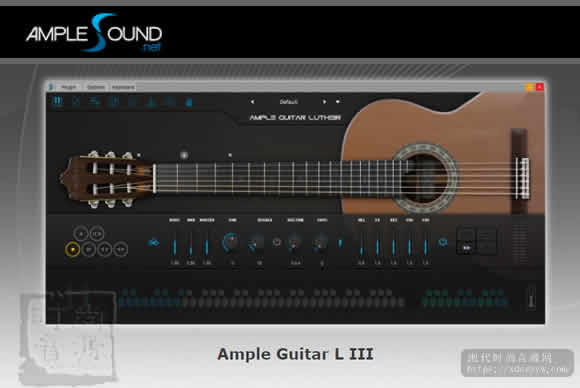![图片[1]-Samplecraze MixBus Mastering Equalisation [TUTORiAL] | 音色插件资源网-音色插件资源网](https://www.yinsebar.com/wp-content/uploads/2021/01/image-155.png)
奇妙 2020年10月25日| 110兆字节
MixBus Mastering Equalization是一部视频教程,介绍了如何在Mixbus / Master总线上使用均衡来进行校正和着色任务。
每当我要掌握混音时,我都会采取一些步骤以确保获得最佳效果。
准备掌握
我要做的第一件事是聆听与我正在制作的混音类似的,制作精良的音乐。我将以此为参考进行即将进行的母带制作过程。耳/脑组合需要呵护,以保持对所听到声音的兴趣,并且制作精良的动态母带每次都会保持这种兴趣。这个想法是为了使母带工程师的耳朵“适应”参考。调整好耳朵并准备好后,我便退后一步,聆听即将掌握的混音。我的聆听水平可以让我听到所有细节,但又不会增加音量。当您尝试掌握时,响度无济于事。它使您的判断浮出水面,并使关键的决策偏颇。我记下了自己需要解决的问题。然后,我一次又一次地听,寻找需要治疗的频率。一旦我完成了“需要考虑的事情”列表,我就决定要创建哪个信号链来实现我所追求的目标,而突出于其余过程的一个过程就是均衡。
掌握均衡–线性相位或最小相位
精心制作的混合物只需要母带工程师处理仙尘即可。如果能够很好地制作和呈现混音,那么就如何掌握混音做出创意决定就容易得多。混合不良会迫使母带处理工程师使用各种纠正过程来尝试纠正错误,有时可能会损害创意处理。在这两种情况下,均等化都是母带化的第一步。无论是矫正还是创新,它几乎总是牢牢掌握在母带信号链的第一位。出现了关于使用哪种类型的均衡器的问题。您选择线性相位手术均衡器还是最小相位彩色均衡器?该决定取决于您要实现的目标。如果要执行校正处理,则线性相位设计可能比最小相位设计更适合该任务。如果您正在执行着色处理,则最小相位设计将为您提供所需的英亩颜色供您使用。
本视频中使用的插件:
Acustica Audio Ivory 4 Mastering Equalizer
该视频涵盖的主题有:
- 带宽
- 固定频率
- 缺口
- 宽带与窄带
- 筛选器
- 回应
- Maselec EQ
- 象牙情商
- 技巧和窍门
FANTASTiC | 25 October 2020 | 110 MB
MixBus Mastering Equalisation is a video tutorial explaining how to use equalisation at the mixbus/master bus both for corrective and colouring tasks.
Whenever I am about to master a mix I take some steps to ensure I get the best possible results.
Preparing to master
The first thing I do is to listen to well produced and mastered music that is similar to the mix I am mastering. I use this as a reference for the mastering process I am about to undertake. The ear/brain combination needs pampering to maintain interest in what it hears and well produced dynamic masters work every time in maintaining that interest. The idea is to ‘tune’ the ears of the mastering engineer to the reference. Once my ears are tuned and ready I step back and listen to the mix I am about to master. I listen at a level whereby I can hear everything in detail but without cranking the volume. Loudness doesn’t help when you are trying to master. It throws your judgement into the air and biases critical decision making. I make notes about what I feel needs addressing in the mix. I then listen again and again looking for frequencies that need treatment. Once I have completed my list of ‘things that need looking at’ I decide on what signal chain to create to achieve the master I am after and the one process that stands out above the rest is that of equalisation.
Mastering equalisation – linear phase or minimum phase
A well produced mix only needs fairy dust processing from the mastering engineer. It is so much easier to make creative decisions about how to master a mix if it is well produced and presented. Poor mixes force the mastering engineer to use all manner of corrective processes in trying to fix errors and that can sometimes compromise the creative processing. In both scenarios, equalisation is used as the first process in mastering. Be it corrective or creative it is almost always nailed into the first spot of the mastering signal chain. The question arises as to what type of equaliser to use. Do you opt for a linear phase surgical equaliser or a minimum phase coloured equaliser? The decision is dependent on what you are trying to achieve. If you are performing corrective processing then a linear phase design might suit the task better than a minimum phase design. If you are performing colouring processing then a minimum phase design will give you acres of desirable colour to play with.
The plugin used in this video:
Acustica Audio Ivory 4 Mastering Equaliser
Topics covered in this video are:
- Bandwidth
- Fixed Frequency
- Notch
- Wideband versus Narrow Band
- Filters
- Responses
- Maselec EQ
- Ivory EQ
- Tips and Tricks


![[三体中国民乐全套 效果器合集] 古风中国风编曲必备 R2R [WiN, MacOSX](40GB+)稳定运行版本-音色插件资源网](https://www.audioba.com/wp-content/uploads/2024/12/20240725195002777-QQ_1721908198947-734x550-1.png)

![[最新Ample吉他3代音色免安装25套合集]Ample Guitar Bass v3.7.0 [WiN, MacOSX](77.1GB+)-音色插件资源网](https://www.audioba.com/wp-content/uploads/2024/11/ample-sound.jpeg)
![[智能自动编曲软件 ]band in a box 2024 中文汉化完整版+安装方法 [WiN](201GB+)-音色插件资源网](https://www.audioba.com/wp-content/uploads/2024/10/Band-in-a-Box-10.jpg)










